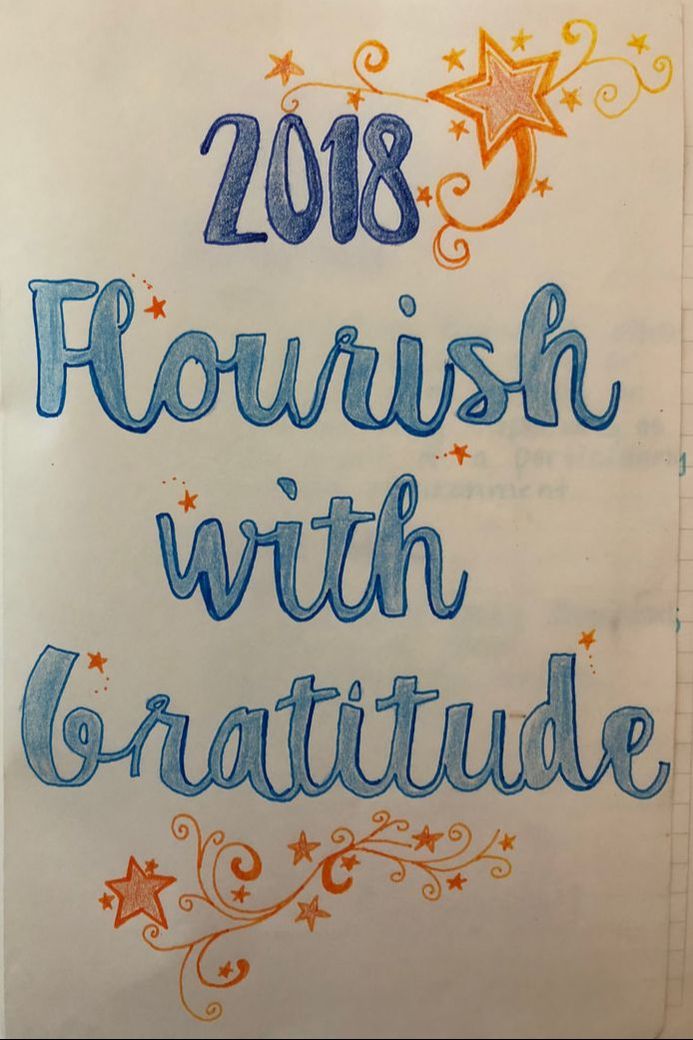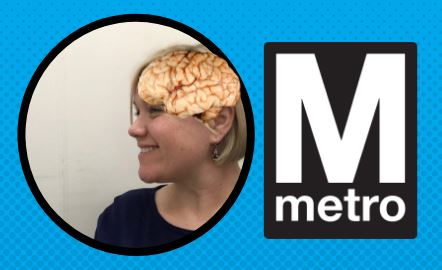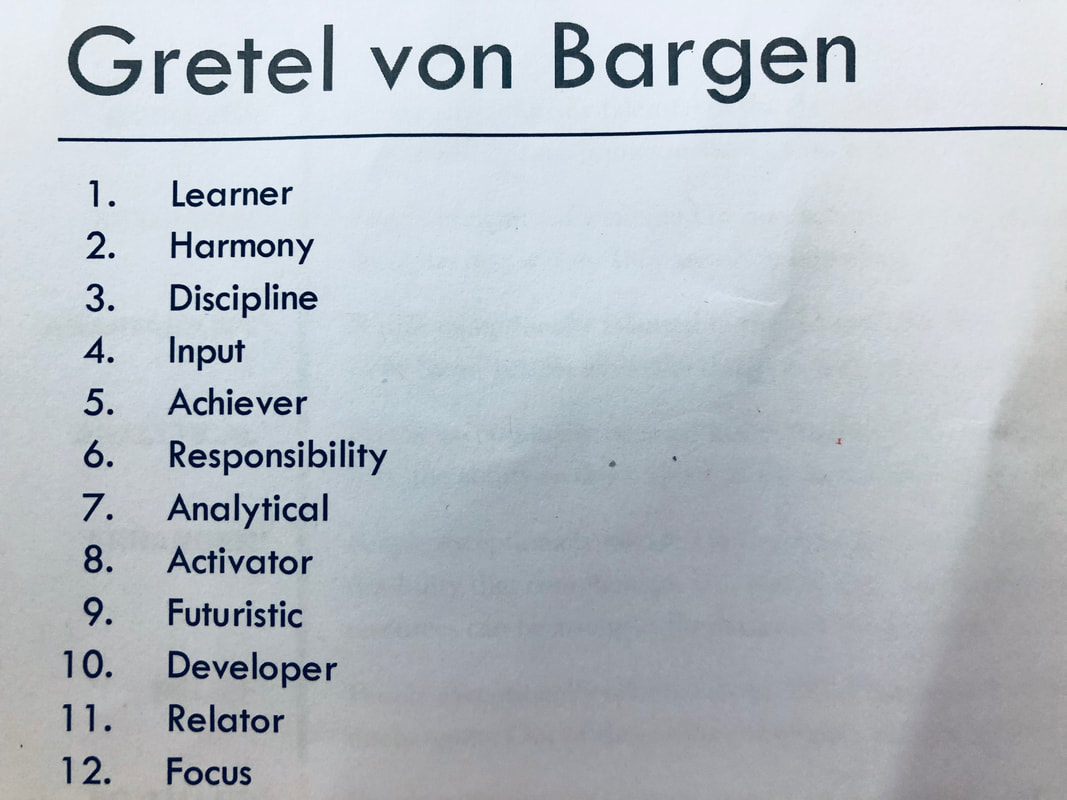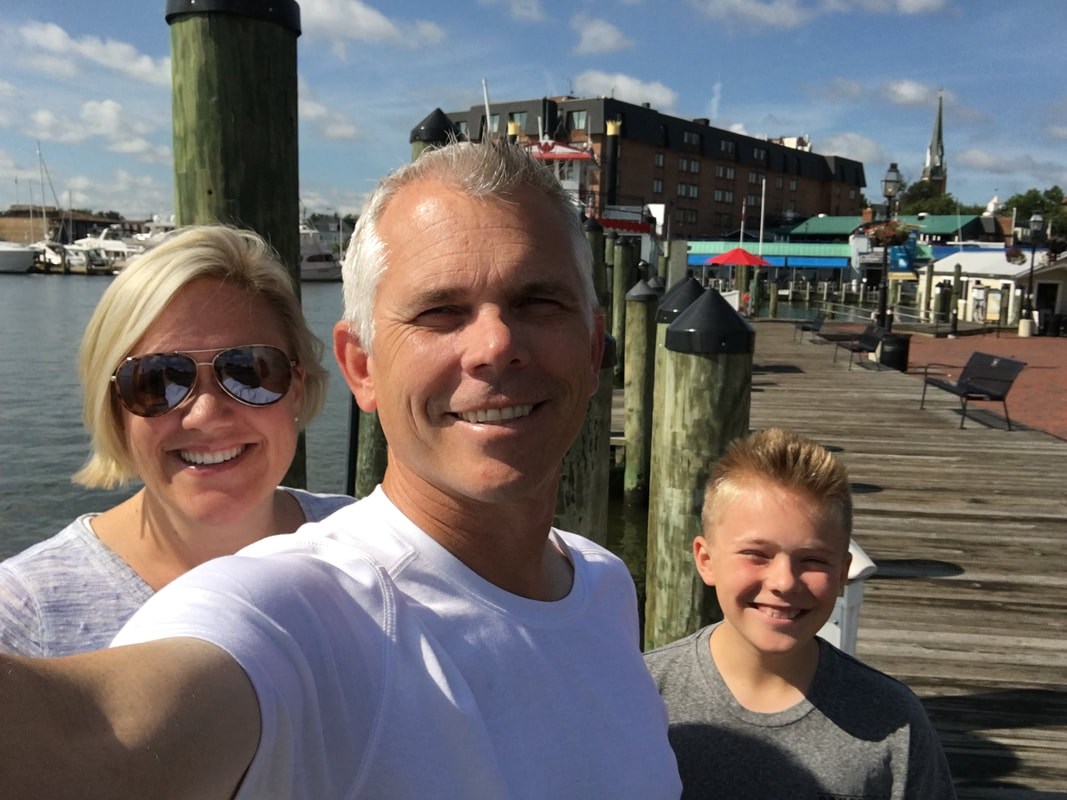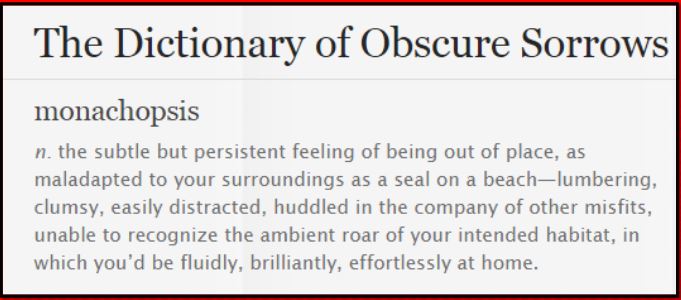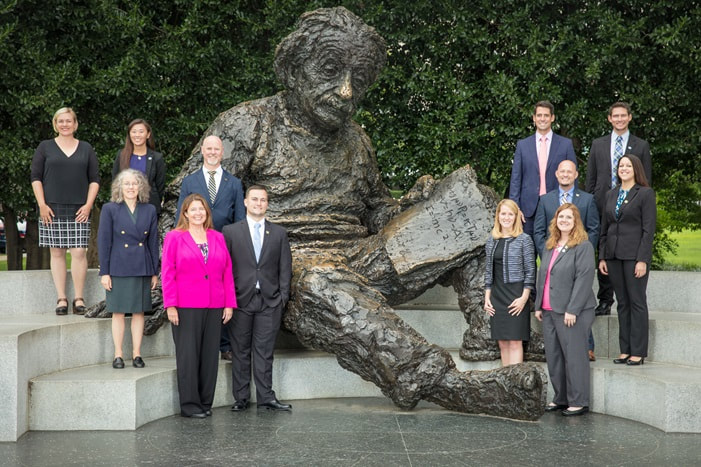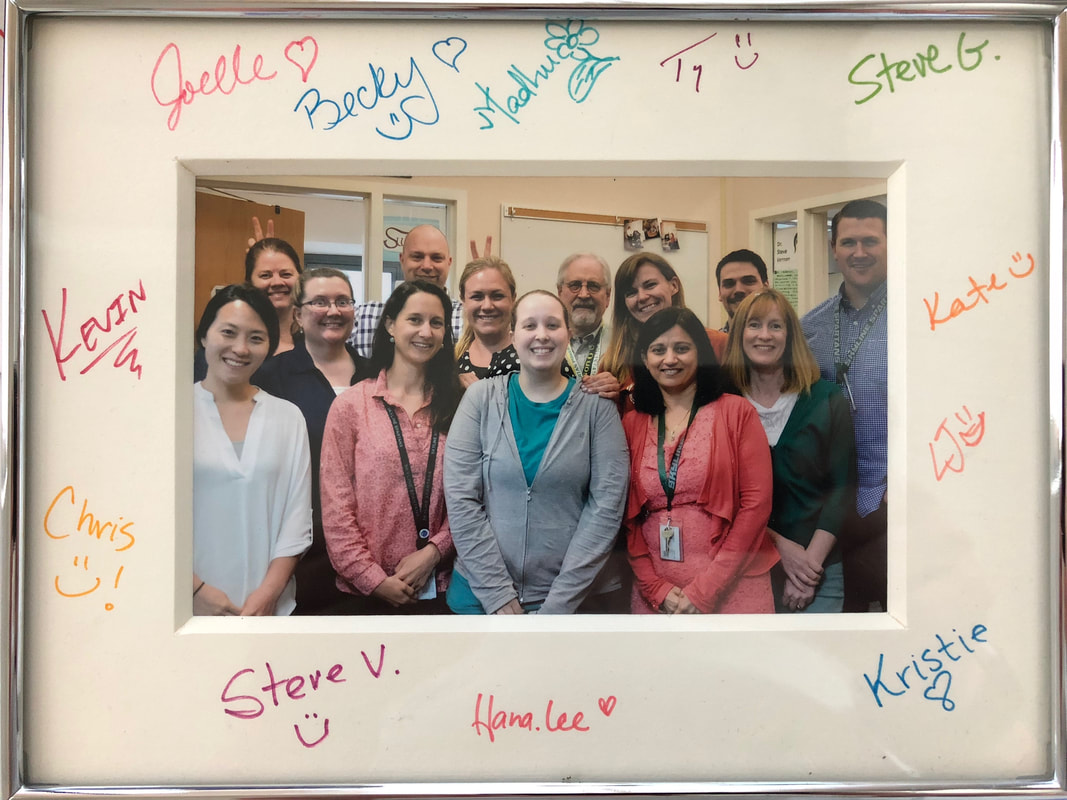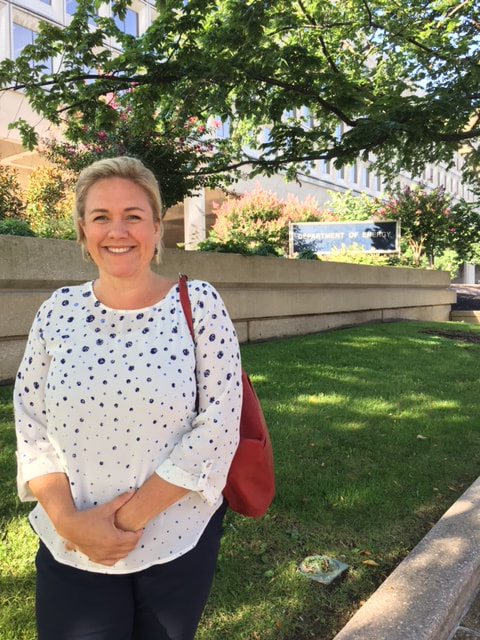|
Since my birthday is on New Year's Eve, January 1 resets both the calendar year and my age. I am a big-time resolution writer (emphasis on writer, because I am not necessarily a big time resolution keeper!). Each January I invest in a new , high quality journal and write about my goals for the year ahead. For 2018 my mantra was to “Flourish with Gratitude.” I chose this because it combines two of my favorite words: On my daily round trip Metro commute to and from the DOE from our temporary home in Arlington, I listen to podcasts and I play Two Dots on my phone, but mostly I just sit and think. I love the ability to have the "choice of what to think about" as author David Foster Wallace spoke about in his "This is Water" commencement address (2005). Ever since I heard that speech, subtitled "some thoughts...about living a compassionate life," I've made an attempt to be more aware (mindful, to use the lingo of the day) of the minutia of thoughts that fill the void. So, anyway, while on the metro I often just sit and think, reflecting on my experiences as an Einstein Fellow and internally question if I have been able to use my short time in DC to Flourish with Gratitude. I think my answer is YES - and here’s why: REASON 1: I've was in a "particularly favorable" (see definition of flourish) fellowship placement. While DC is not currently a “particularly favorable environment” for me politically, my specific fellowship placement was “particularly favorable” for me personality. Within the DOE I had the time and opportunity to both feel like I was making a meaningful impact towards a successful National Science Bowl while also being able to explore my own learning and professional growth. It’s the opportunity for learning that was “particularly favorable” for my attempt to flourish while in DC. According to the Gallup Character Strengths analysis we completed at the beginning of the fellowship, my #1 character strength is LEARNER, meaning that I have, “a great desire to learn and want to continuously improve. The process of learning, rather than the outcome, excites [me].” Facts. In hindsight, I can also say that the DOE placement also matched well with my other top strengths: harmony, discipline, input and achiever. Thank you Jan, and others in the DOE Office of Workforce Development of Teachers and Scientists, for your part in making my fellowship year a success. REASON 2: I have a "particularly favorable" family. Everyone who knows me knows that I married to the most supportive, wonderful person. Over our 24 years together, Curtis has always been the first to say "do it" when I mention a new challenge or opportunity. He doesn't balk at my chances or immediately think of the hassle to him personally. The Einstein Fellowship was no different; he supported me and our little family throughout this crazy time; moving across the country, learning a new town and moments of feeling isolated or lonely. It's been a super busy work year for Curtis, but even when he's not home we take time each night to talk about the best parts of our days. Thank you, Curtis. Maybe there is something genetic, but our son Carrick has been equally as supportive. Even though he's "only" 13, Carrick has (at moments) been wise beyond his years. I know I was asking a lot of a kid to leave the comfort of school, friends, team and routine to move across the country and be plopped into a new habitat. There have certainly been moments of frustration for him, but overall he's displayed a real sense of adventure and openness to new experiences. There is no doubt in my mind that one of the best parts of this year has been the chance for Carrick and I to spend so much time together without the distraction (for lack of a better word) of school commitments and/or social lives. The time has been a gift and I've loved spending it with our kid. Thank you, Carrick. As Curtis and I raise an only child, I can't help but think of my parents and what it was like for them to parent me, also an only child. I am so very appreciative for all of the "gifts" (not tangible) my parents have given me throughout my life. Their support of me throughout the fellowship has been no exception. From editing my application essays to filling their garage with our moving boxes, my parents are both emotionally and practically supportive of this adventure. Thank you, Mom and Dad. REASON 3: I am part of a "particularly favorable" fellowship cohort. One commute morning this past spring, I was listening to a TED Radio Hour podcast and the host, Guy Raz, was interviewing John Koenig, author of a dictionary of made up words, called "The Dictionary of Obscure Sorrows." His dictionary aims to fill the gaps in the English language with terms to describe emotions. I was caught off guard when Guy asked John to define the word "Monachopsis" because this "fake" word perfectly defined moments of my Fellowship. Being in a relatively isolate fellowship position, without the hustle, bustle and vibrancy of a classroom, without the chitter-chatter of the science department lunch table, without the pressure of planning daily lessons and balancing too much grading with not enough time - I was feeling out of place, out of my "intended habitat". There were moments of this fellowship in which I felt "out of place", but as the definition of monachopsis states, I was able to "huddle in the company of other misfits"... my fellow fellows. We are a group of twelve math and science teachers, brought together to experience a year out of our norm, collectively working toward improving STEM education for the kids in our classes and in our nation. We were able to learn together, laugh together, challenge each other and grow together, professionally and personally. It's been a pleasure to get to know each of them and I look forward to the social media tracking and "real life" reunions we are sure to have in the future. Thank you, Kim. Thank you, Ruth Ann. Thank you, John. Thank you, Lisa. Thank you, Chris. Thank you, Jennifer. Thank you, Becky. Thank you, Kelly. Thank you, Michael. Thank you, Evan. And especially, thank you, David. REASON 4: I have "particularly favorable" school colleagues As I return to teaching, I am so glad that I will be returning back to a system, school and department that have been so supportive of me leaving for a year. During the application process I met with our assistant superintendent of human resources and school principal to make sure that I would be welcome back after a one year leave of absence. I wasn't willing to leave a school and job I love if I wasn't going to be able to return. Thank you, Lisa and for supporting teacher professional development and encouraging me from afar. There is also no doubt I would have felt comfortable leaving my classroom if I didn't trust my science department teacher colleagues to carry the IB Biology load while I was away. I've poured my heart and soul into the IB Biology class I teach (this website is a testament of that) and my colleagues have more than risen to the occasion of teaching the class in my absence. Thank you, Chris. Thank you, Allie. And most importantly, thank you, Steve. I'm looking forward to being back and co-teaching with you again. I kind of feel like the Einstein Fellowship can be perfectly summarized by this Calvin and Hobbes comic: "Is our quick experience here pointless?
Does anything we say or do in here really matter? Have we done anything important? Have we been happy? Have we made the most of these precious fes [months]??" My answers: No. Yes. Yes. Yes. Yes. And with that, 2017-2018 Albert Einstein Distinguished Educator Fellowship ... over and out. With gratitude, GvB |
Archives
July 2018
|
I give many of my IB Biology resources away, for the benefit of students and teachers around the world.
If you've found the materials helpful, please consider making a contribution of any amount
to this Earthwatch Expedition Fund.
Did I forget something? Know of a mistake? Have a suggestion? Let me know by emailing me here.
Before using any of the files available on this site,
please familiarize yourself with the Creative Commons Attribution License.
It prohibits the use of any material on this site for commercial purposes of any kind.
If you've found the materials helpful, please consider making a contribution of any amount
to this Earthwatch Expedition Fund.
Did I forget something? Know of a mistake? Have a suggestion? Let me know by emailing me here.
Before using any of the files available on this site,
please familiarize yourself with the Creative Commons Attribution License.
It prohibits the use of any material on this site for commercial purposes of any kind.


